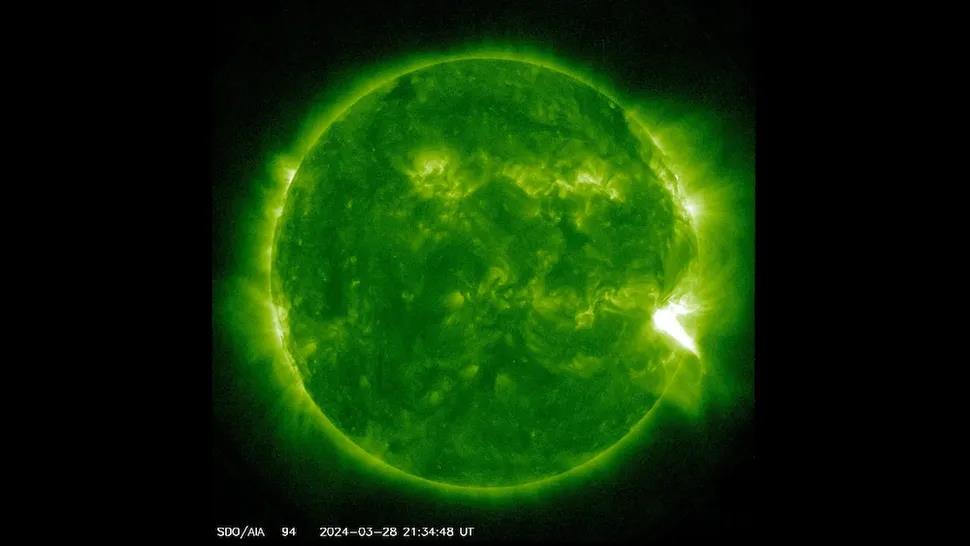Tàu NASA Unveils the Cause of Radio Wave Interruption

The recent interruption in radio waves in the Pacific Ocean has puzzled scientists and experts in the field. However, the National Oceanic and Atmospheric Administration (NOAA) has come forward with an explanation for this phenomenon. According to NOAA, the incident was caused by a powerful burst of radiation from the Sun, aptly named a “solar fireball.”
The solar fireball, which was emitted on March 28, traveled for a few days before it collided with the Earth’s atmosphere, resulting in the radio wave disruption. This conclusion was drawn based on images captured by NASA’s Solar Dynamics Observatory (SDO), a spacecraft orbiting our sun.
In one of the images, a bright spot can be seen emanating from the surface of the Sun, representing the moment the solar fireball was launched. This fireball reached an intensity level of X1.1, making it one of the strongest solar flares ever recorded. It was emitted from the Sun at 4:56 am on March 29 (according to Vietnam time), after a total duration of travel time that coincided with the disruption of radio waves in the Pacific.
Accompanying this solar fireball was a coronal mass ejection (CME), which can be understood as a large plasma fireball. NOAA initially predicted that the CME would veer off course from Earth, but the subsequent events clearly indicated that regardless of its trajectory, this fireball, in conjunction with the solar flare, caused a powerful geomagnetic storm.
Earth may be subjected to even more intense solar activity in the coming days as the Sun enters its peak phase of an 11-year cycle. Although this is a natural phenomenon, it is important for space aviation operators to closely monitor space weather, as it can have some impact on positioning and communication systems.
As we continue to explore the mysteries of our universe, understanding and predicting such occurrences become essential for both scientific research and technological advancements. Stay informed with Business Today for more updates on the latest developments in finance, economics, and beyond.
For more information on this topic, please visit Business Today.
